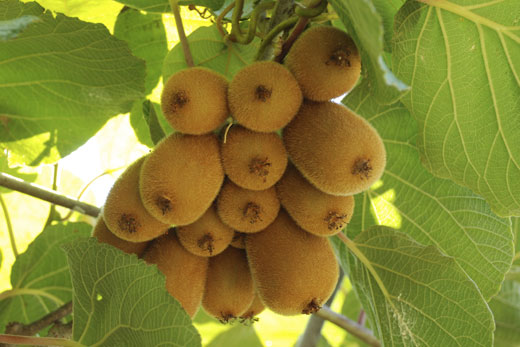Tariffs are costing every kiwifruit grower $29,000 each season, but a new report shows tariffs imposed by other countries on New Zealand products are dropping.
The study says fruit and vegetable exporters paid an estimated NZ$181 million in tariffs to importing countries - a reduction of 25 per cent on the 2012 figure of $241 million.
A new reports suggests tariffs on NZ products are dropping.
At the same time export earnings increased by four per cent, while the number of growers for export has reduced since 2012.
For this country's 2556 kiwifruit growers the highest tariff is 45 per cent in the Republic of Korea, which equates to almost $20 million. The tariff in the EU is 8.8 per cent, a cost of $24.4million.
The New Zealand Horticulture Export Authority and Horticulture New Zealand commission the ‘New Zealand Horticulture – Barriers to Our Export Trade' report every two years, with funding support from the Ministry of Foreign Affairs and Trade.
The report is prepared by Wellington-based company Market Access Solutionz and is used extensively by both industry and government agencies for monitoring and negotiating international trade access and helping exporters develop new markets.
About 60 per cent of New Zealand's total horticultural production of fruit and vegetables is exported, valued at just over $2.4 billion.
'It is very pleasing to see the eight free trade agreements now in effect are bearing fruit as overall trade value increases while the tariff cost drops,” says Horticulture Export Authority chief executive Simon Hegarty.
HortNZ chief executive Peter Silcock adds: 'With New Zealand's free trade agreements being predominantly in the Asian region where high tariffs are common, this progress on tariff reduction enhances the great opportunities for developing trade in Asian countries.
'That's why we need to continue our efforts on developing and signing free trade agreements.”
As in the previous 2010 and 2012 editions, there is a notable trend for many importing countries to exploit the use of non-tariff trade barriers, in the form of sanitary and phytosanitary issues, and other technical compliance barriers.
'This NTB threat remains a concern to our horticulture export sectors,” says Simon. 'Unfortunately, reality tells us a reasoned case backed by sound science rarely prevails when up against politically motivated decision making.
'It is important that exporters and government jointly recognise this risk to their business and appropriately resource it to deal with the importing country requirements.”
This report does not calculate the SPS costs of not being able to access a particular market.
HortNZ and HEA are confident these costs are greater than the costs of tariffs calculated in this report.
Simon adds: 'Technical barrier costs faced by our exporters include compliance with quota restrictions, grade standards, fumigation requirements, additional product testing, plus labelling and packaging rules.
'Food security and self-sufficiency are emotive topics and vulnerable to political interference.”



0 comments
Leave a Comment
You must be logged in to make a comment.